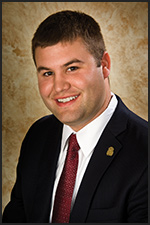End Meats Help Drive Premiums
Price and purchases show marbling matters in the end, too.
T-bones, sirloins, filets and strips — these are the beef cuts referred to as “middle meats.” Such steaks make up 12% of the carcass, but represent less than half of its total value.
That and the difference in cooking method lead many to believe it’s the only place where beef grades matter. Not true, according to experts like longtime market reporter Bruce Longo, of Urner Barry, and the data he tracks.
“There are premiums for higher-quality end cuts,” he says. “Now, are they to the magnitude or the size that you see in the middle meats? No, you are not going to see the same margins that you would from a branded loin or rib over a Choice one, but there is still a premium.”

“Marbling makes a massive difference in terms of eating experience, even when we get to those end meats, and the sales numbers show that,” says David O’Diam, assistant director of sales for Certified Angus Beef LLC.
Urner Barry reports the wholesale Certified Angus Beef® (CAB®) brand premium. In 2012, some of the most popular CAB end meats from the round and chuck brought 11¢-13¢ more than Choice. The wholesale premium for a CAB tenderloin was 85¢.
“We focus a tremendous amount of effort at retail on those end cuts,” says David O’Diam, assistant director of sales for the brand. “Not very long ago when we’d look to convert some of those retail outlets from Choice end meats to CAB, the argument was it’s just pennies per pound.”
In 2008, the premium for a CAB bottom round flat above Choice was 6¢; five years later it was nearly double that at 10¢. The trend holds true for other end meats, too.
Today’s economics may show a wider spread, but the same opportunity, he says.
“This product is of high enough quality that it’s worth it,” O’Diam says. The proof is in the sales numbers that show end-meat receipts were up 7% last year.
In 2006, Colorado State University analyzed tenderness on 17 different cuts grading either Select or premium Choice. Nine end cuts from the chuck and round with higher levels of marbling had significantly better tenderness scores.
Few studies exist on the flavor and juiciness differences in varying quality grades of end meats, but O’Diam says consumer feedback and parallels between middle-meat research tell the story.
“Marbling makes a massive difference in terms of eating experience, even when we get to those end meats, and the sales numbers show that,” O’Diam says.
The national economy affects meatcase decisions, too.
“People are wanting to spend less because they have less disposable income, but they still want quality,” Longo says.
All beef prices have trended upward in the last few years, and the Choice-Select spread continues to widen in annual averages. From October through mid-March, that spread’s average of more than $12 was a few pennies shy of a year ago, yet the CAB-Choice spread jumped by more than 38% (see table).
| Oct./mid- March
|
CAB
|
Choice
|
Select
|
CAB/CH spread
|
CH/SE spread
|
| 2012 | $199.39 | $189.73 | $189.73 | $9.66 | $12.10 |
| 2013 | $203.87 | $190.54 | $178.53 | $13.33 | $12.02 |
| Change | $4.48 | $0.81 | $(11.21) | $3.67 | $(0.08) |
| % Change | +0.02% | 0.00% | -0.06% | +38.05% | -0.65% |
“As that premium continues to increase, it proves quality pays,” O’Diam says. It also helps explain the upward trek of the end-meat premiums.
“Middle meats are still our bread and butter, but as the price of CAB increases, the ends have to carry the burden for more and more of that price increase,” he says.
As with any cuts, there is seasonality to the pricing and export influences.
Longo says, “It is very apparent that when it’s time for middle meats to have their run, they will have their run upward.” Just ahead of summer grilling and the holiday seasons, he adds, the spread between branded, upper two-thirds Choice and low-Choice beef widens. “Then there is a time for the end cuts, typically in the late summer to early fall when the buying sector is trying to get chucks, rounds and roasts bought for the retail feature.”
Trade agreements have recently opened markets like Colombia and Chile to high-quality U.S. beef, and that has propped up values of specific end-meat cuts, like the chuck roll.
That is also a popular subprimal for whole-muscle grinds, or premium ground beef, which is a category that has grown in the past decade.
“CAB has become more widely known and people know there is a benefit to buying premium beef,” Longo says. “I do think that branding matters here. An end cut is a piece of meat and do you want something that is No Roll or do you want something that has some marbling in there?
“We know that marbling is flavor and tenderness,” he says.
Editor’s Note: Miranda Reiman is the assistant director of the Industry Information division of Certified Angus Beef LLC (CAB).






